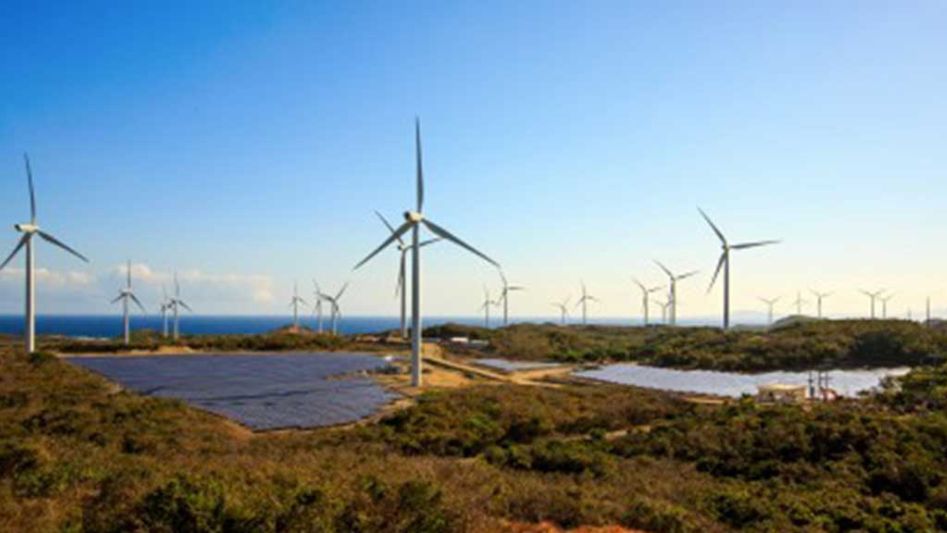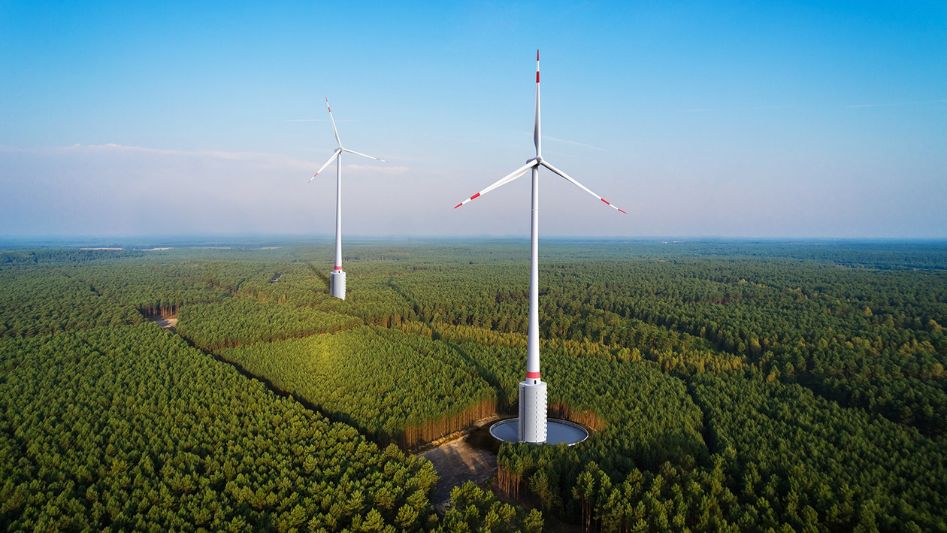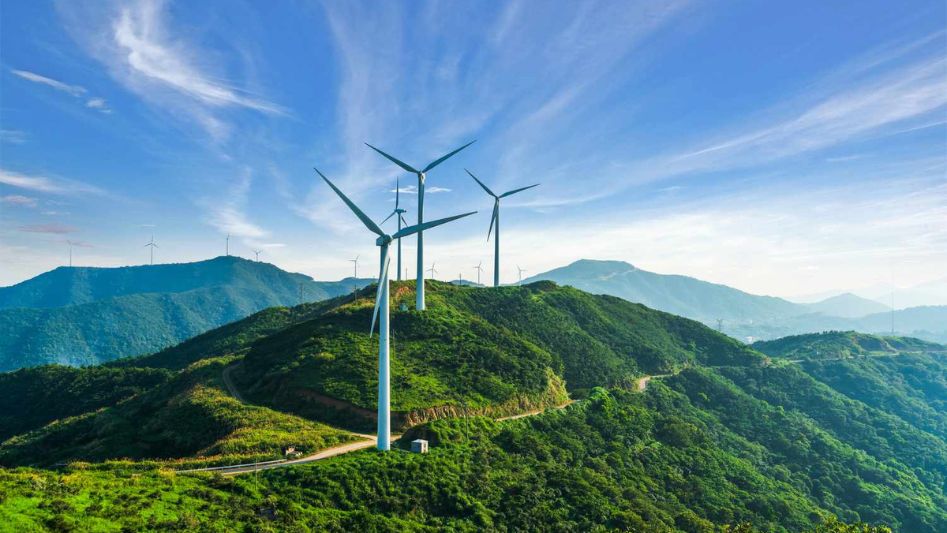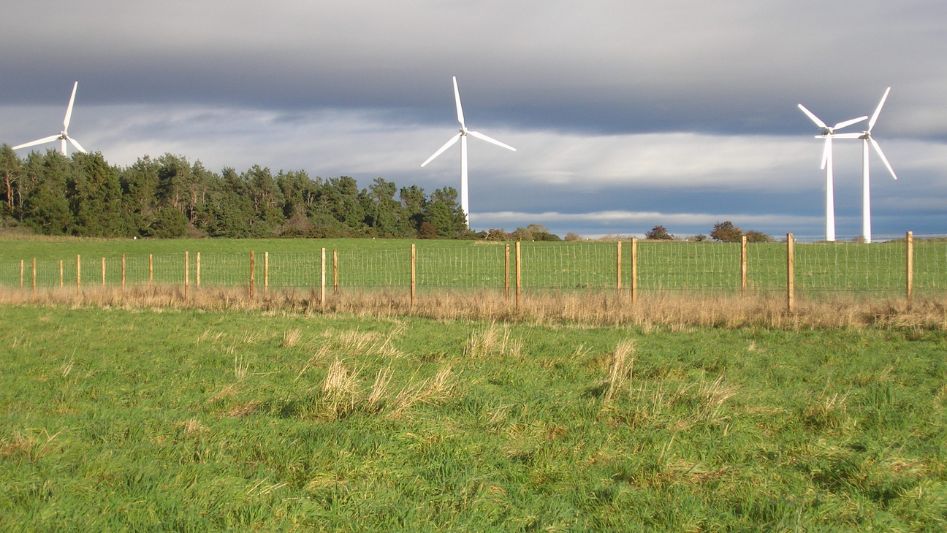In an era where environmental concerns are paramount, finding sustainable and clean sources of energy has become a top priority. One such source that has gained significant attention and popularity in recent years is wind energy, harnessed through wind turbine farms. These towering structures are not only an impressive sight but also a testament to human ingenuity in harnessing the power of nature to generate electricity. In this article, we will explore the world of wind turbine farms and how they are transforming the energy landscape, powering communities with clean, renewable energy.
Table Of Content
We invite you to read: “Offshore Wind Farms: Powering Coastal Communities with Clean Energy”

Harnessing the Power of the Wind
Wind turbines are mechanical devices designed to convert the kinetic energy of the wind into electrical power. They work on a simple principle: when the wind blows, it causes the turbine blades to rotate. These rotating blades, connected to a generator, produce electricity. The stronger the wind, the faster the blades turn, generating more electricity.
Wind turbine farms are strategically located in areas with consistent and strong wind patterns. Coastal regions, open plains, and mountain passes are some of the preferred locations for these farms. Understanding wind patterns is crucial in determining the optimal placement of turbines to maximize energy production.
The Growth of Wind Energy
Over the past few decades, the wind energy sector has experienced remarkable growth. Advancements in technology, increased environmental awareness, and government incentives have all contributed to this expansion. Wind turbine farms have become a common sight in many countries, with their capacity and efficiency steadily increasing.
1. Environmental Benefits: One of the primary reasons for the popularity of wind energy is its environmental friendliness. Wind turbines produce zero greenhouse gas emissions, making them a clean and sustainable energy source. This helps mitigate climate change and reduce the overall carbon footprint.
2. Renewable and Sustainable: Wind energy is a renewable resource, as long as the wind keeps blowing. Unlike fossil fuels, which are finite and deplete over time, wind is an abundant resource that will remain available for generations to come.
3. Energy Independence: Wind energy can contribute to reducing a nation’s dependence on fossil fuels, enhancing energy security. By diversifying the energy mix, countries can reduce their vulnerability to supply disruptions and price fluctuations in the global energy market.
4. Job Creation: The wind energy industry also contributes to job creation. Building, operating, and maintaining wind turbine farms require a skilled workforce, providing employment opportunities in rural areas.
We invite you to read: “The Evolution of Wind Turbine Technology: Past, Present, and Future”

Challenges and Solutions
While wind turbine farms offer numerous advantages, they also face several challenges that need to be addressed:
1. Intermittency: Wind energy generation is intermittent, as it depends on wind speed and direction. To overcome this challenge, energy storage solutions like batteries are being developed to store excess energy during windy periods for use when the wind is calm.
2. Environmental Impact: The construction of wind turbine farms can have localized environmental impacts, such as habitat disruption and bird collisions. Proper site selection and environmental impact assessments are essential to mitigate these issues.
3. Aesthetics and Noise: Some people find wind turbines visually unappealing and noisy. Innovations in turbine design, quieter blades, and improved aesthetics are being pursued to address these concerns.
Powering Communities
Wind turbine farms have the potential to power entire communities with clean energy. The electricity generated can be integrated into the grid and distributed to homes, businesses, and industries. This reduces the reliance on fossil fuels and contributes to a cleaner and more sustainable energy mix.
In addition to powering communities, wind energy can also be harnessed for various other applications, such as desalination plants, electric vehicle charging stations, and even the production of hydrogen for fuel cells.
We invite you to read: “Wind Turbine Innovation: Small-Scale Solutions with Big Impact”

Conclusion
Wind turbine farms are at the forefront of the transition to a cleaner and more sustainable energy future. They harness the power of the wind, provide numerous environmental benefits, and contribute to energy independence and job creation. While challenges exist, ongoing research and innovation continue to improve the efficiency and effectiveness of wind energy generation. As wind turbine farms continue to multiply across the globe, they represent a promising path towards a greener and more sustainable world, one where communities are powered by clean and renewable energy sources.
FAQs
How do wind turbines work?
Wind turbines work by using the kinetic energy of the wind to turn their blades, which are connected to a generator, producing clean, renewable electricity.
What are the environmental benefits of wind energy?
Wind energy is environmentally friendly, producing zero greenhouse gas emissions and helping to combat climate change.
What challenges do wind turbine farms face?
Challenges include intermittency due to variable wind speeds, localized environmental impacts, and concerns about aesthetics and noise.
How does wind energy contribute to communities?
Wind turbine farms can power entire communities with clean energy and reduce dependence on fossil fuels.
You May Also Like
- Vertical Axis Wind Turbines: A Green Revolution on the Horizon
- Blowing Away the Competition: Wind Energy’s Rise to Prominence
- Quiet and Efficient: The Advantages of Vertical Axis Wind Turbines
- The Art and Science of Wind Turbine Placement: Finding the Perfect Windy Spot
- Wind Turbines and Climate Change: Mitigating CO2 Emissions with Wind Power

